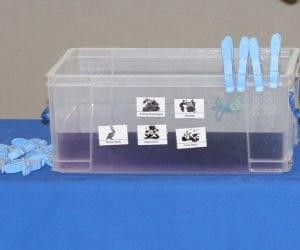You have probably heard of the Great Pacific Garbage Patch, a giant trash vortex composed of mostly discarded plastic that ends up in the ocean. But it turns out there are many interesting facts about the clusters of garbage in our oceans. Learning about these garbage gyres can help as we work to keep oceans trash-free and as healthy as possible for not just humans, but all marine plants and animals.
1. There are five gyres of debris throughout the world’s oceans.
Although the Great Pacific Garbage Patch is the most notable of the floating ocean trash vortexes, there are actually five “gyres” of marine debris floating on the surface of Earth’s oceans. Gyres are large systems of circulating currents, which essentially guide debris to predictable final destinations, like giant whirlpools moving in slow motion.
The five garbage gyres are located in the North Pacific, Indian, North Atlantic, South Pacific, and South Atlantic oceans.
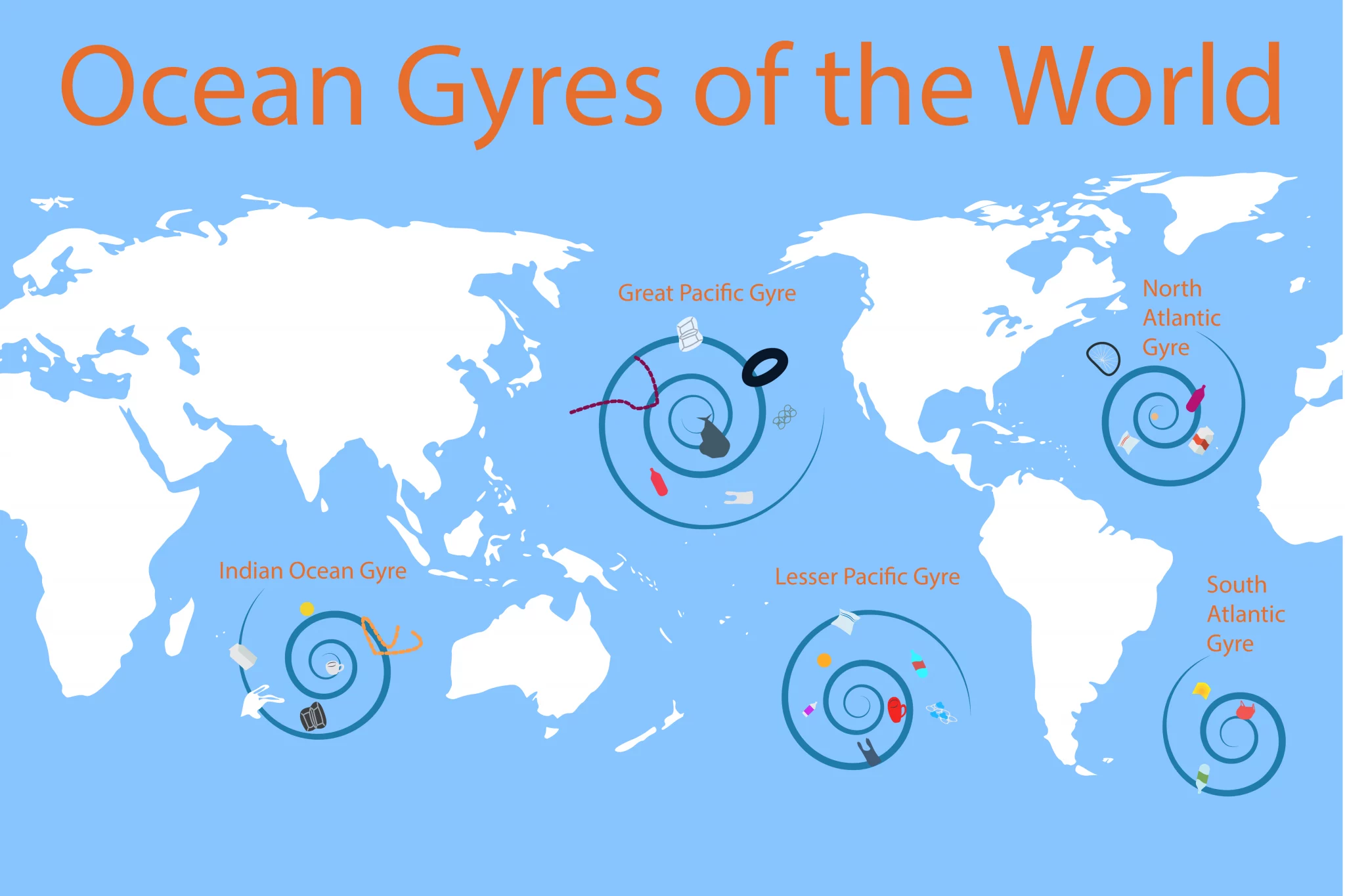
2. Ocean gyres form from the forces of wind and the Coriolis Effect.
Wind and the Coriolis effect both move the water in the ocean: the wind pushes the water forward, while simultaneously, wind patterns are altered by the Earth’s natural spin – this is the Coriolis Effect. Together, these cause the water and wind to move in a circular, spinning motion. The proximity and size of nearby continents also affect the gyres. A gyre cannot extend past land, so the continents form a type of boundary which limits their size and shape.
3. Every minute, we dump two garbage trucks of plastic into the oceans.
That’s roughly 5.25 trillion bits of plastic trash entering the ocean today. That’s enough trash to cover every foot of coastline worldwide with five full trash bags of plastic. And unfortunately, that number is just expected to grow. By 2040, the amount of plastic trash flowing into the ocean is expected to triple to 29 million metric tons.
4. Only 1% of plastic in the ocean floats on the ocean’s surface.
Pictures of the garbage gyres in the ocean usually highlight what looks like an endless sea of floating plastic. However, these photographs only capture the most obvious form of plastic pollution and don’t tell the whole story of marine debris. Most of the debris in the ocean does not float; it sinks.
In fact, 94% percent of plastics eventually sink to the ocean floor. This percentage includes most consumer plastics, which has led to an average of 70 kilograms of plastic covering each square kilometer of the ocean floor.
5. Most of the debris in the five ocean gyres comes from just ten rivers.
Roughly 90% of the plastic in the ocean comes from just ten rivers, five of which pass through China. The rivers are the Yangtze, Yellow, Hai, Pearl, Amur, Mekong, Indus, and Ganges Delta in Asia, and the Niger and Nile in Africa. The Yangtze alone dumps up to an estimated 1.5 million metric tons of plastic waste into the Yellow Sea.
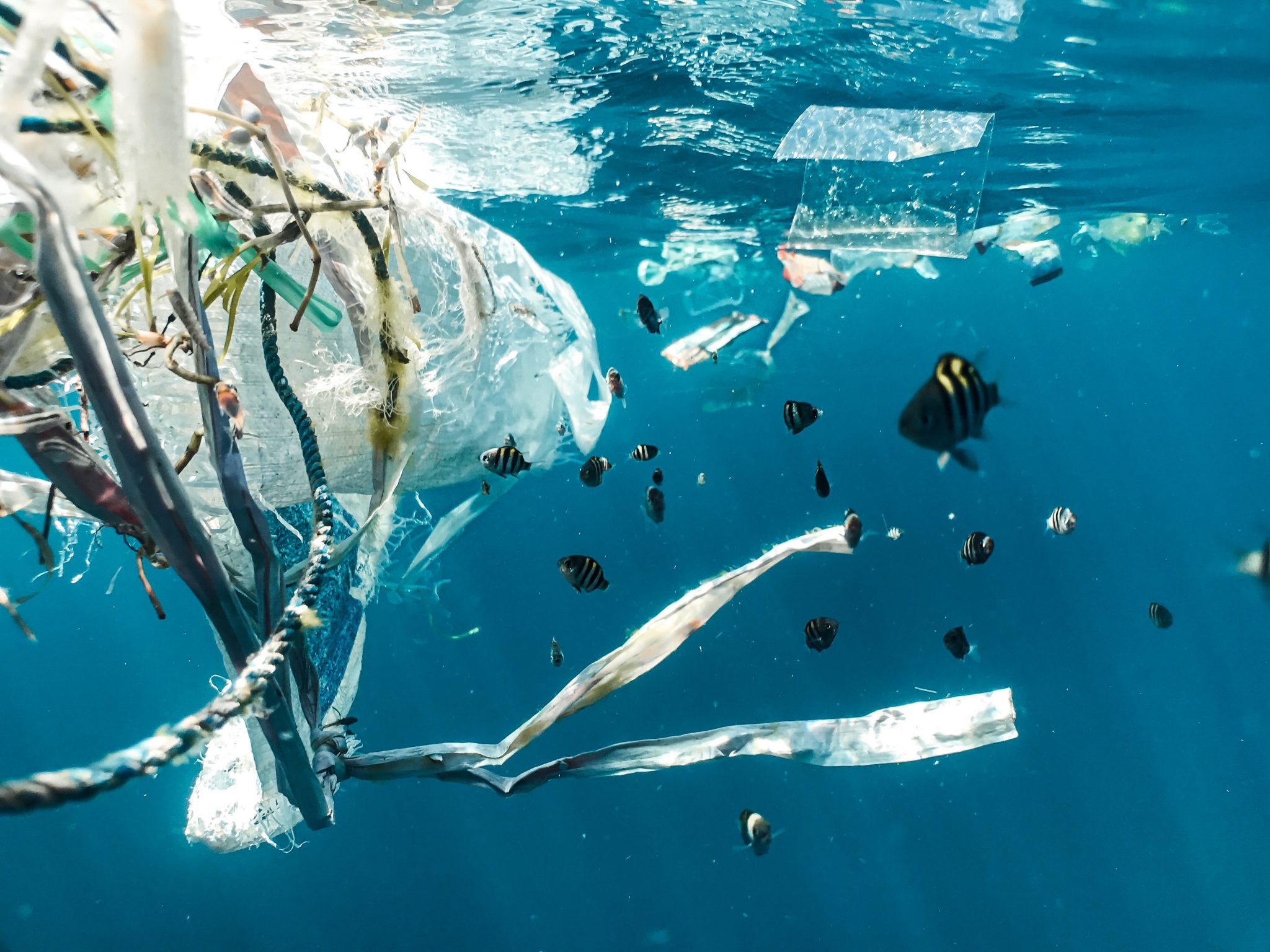
Here is a list of the main 10 rivers contributing to plastic pollution and how much debris they carry:
Chang Jiang (Yangtze River)
• 1.5 million tons of plastic debris
• This Chinese river is Asia’s longest river and flows to the southern part of the Yellow Sea, which accesses the Pacific.
Indus
• 160,000 tons of plastic debris
• The Indus River enters the Indian Ocean from Pakistan.
Huang He (Yellow River)
• 120,000 tons of plastic debris
• The second longest river in China, which leads to the Pacific via the Yellow Sea.
Hai He
• 92,000 tons of plastic debris
• The Hai He river system is in the northern part of China and flows into the Bohol Sea.
Nile
• 85,000 tons of plastic debris
• The longest river in the world, which flows through Egypt to reach the Mediterranean Sea.
Ganges River Basin
• 73,000 tons of plastic debris
• The Ganges River Basin flows out to the Bay of Bengal, reaching the Indian Ocean.
Zhujiang (Pearl River)
• 53,000 tons of plastic debris
• The Pearl River flows through China to the South China Sea.
Amur
• 38,000 tons of plastic debris
• The Amur River forms part of the border between Russia and China, leading to the Sea of Okhotsk.
Niger
• 35,000 tons of plastic debris
• The Niger River flows through West Africa to the Gulf of Guinea on the coast of Nigeria.
Mekong
• 33,000 tons of plastic debris
• The Mekong River flows through Southeast Asia past Laos, Thailand, and Cambodia, emptying into the South China Sea.
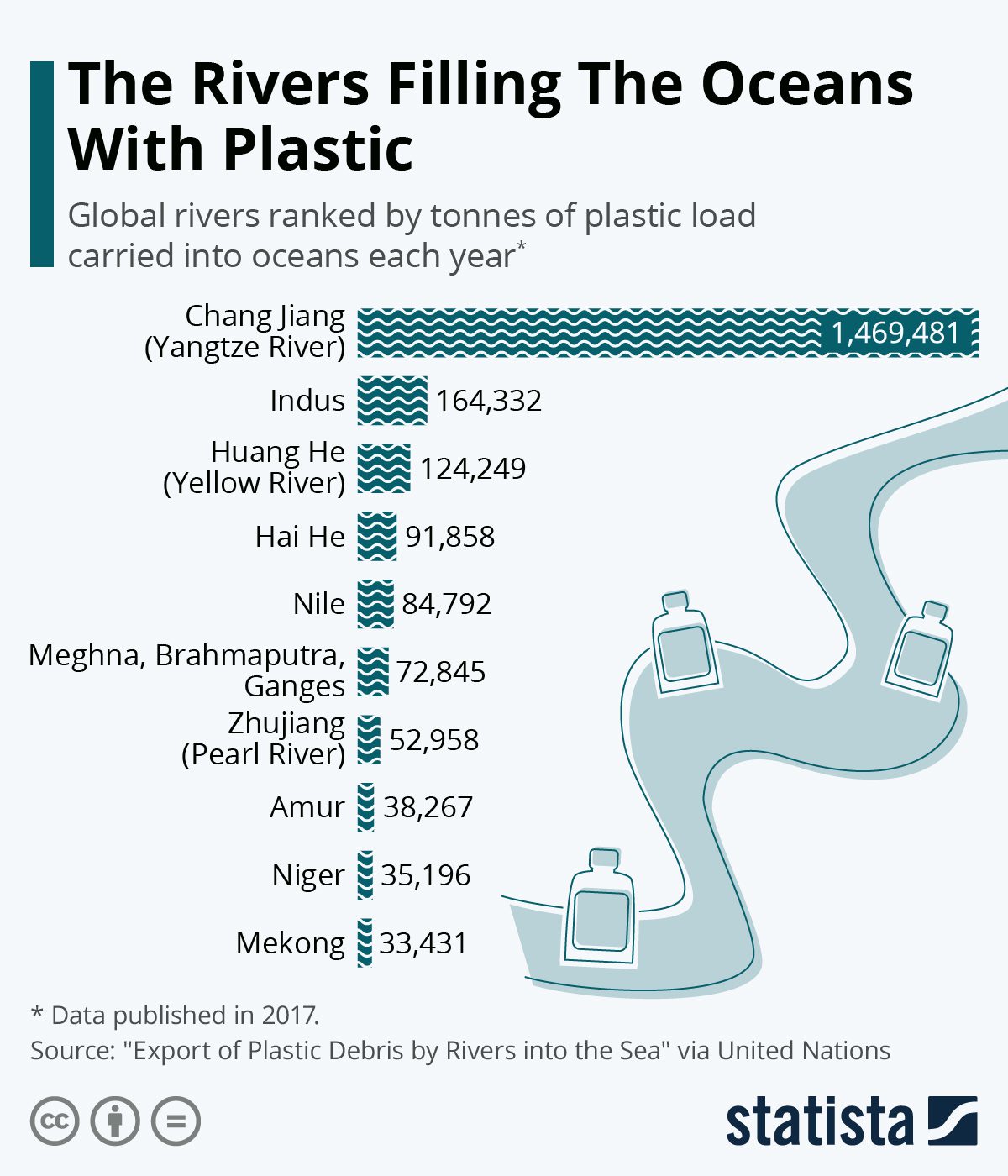
6. A French man decided to swim through the Great Pacific Garbage Patch to raise awareness of ocean plastic pollution.
In 2019, long-distance swimmer Ben Lecompte set off on a two-and-a-half-month journey of more than 338 nautical miles. He started his swim in Hawaii, planning his route straight through the Garbage Patch to finish in San Francisco.
While swimming, Lecompte partnered with researchers to study the contents of the trash gyre. On his journey, he found large pieces of debris like a toilet seat and a hardhat, and a seemingly endless amount of microplastics. Most surprisingly, his swim through the garbage patch saw a bountiful supply of small and large marine organisms living in and around the pollution.
7. Marine animals migrate and inhabit the Great Pacific Garbage Patch, which has led many to ingest more plastic each day than actual food.
The surface of the Great Pacific Garbage Patch has 180 times more plastic than marine life, but there are still marine organisms that migrate through the area or call nearby regions home. This means that these animals are likely consuming plastic from the garbage patch. For example, sea turtles within and around the patch can have up to 74% (by dry weight) of their diets composed of ocean plastics. Laysan albatross chicks from Kure Atoll and Oahu Island have around 45% of their wet mass composed of plastics from surface waters of the garbage patch.
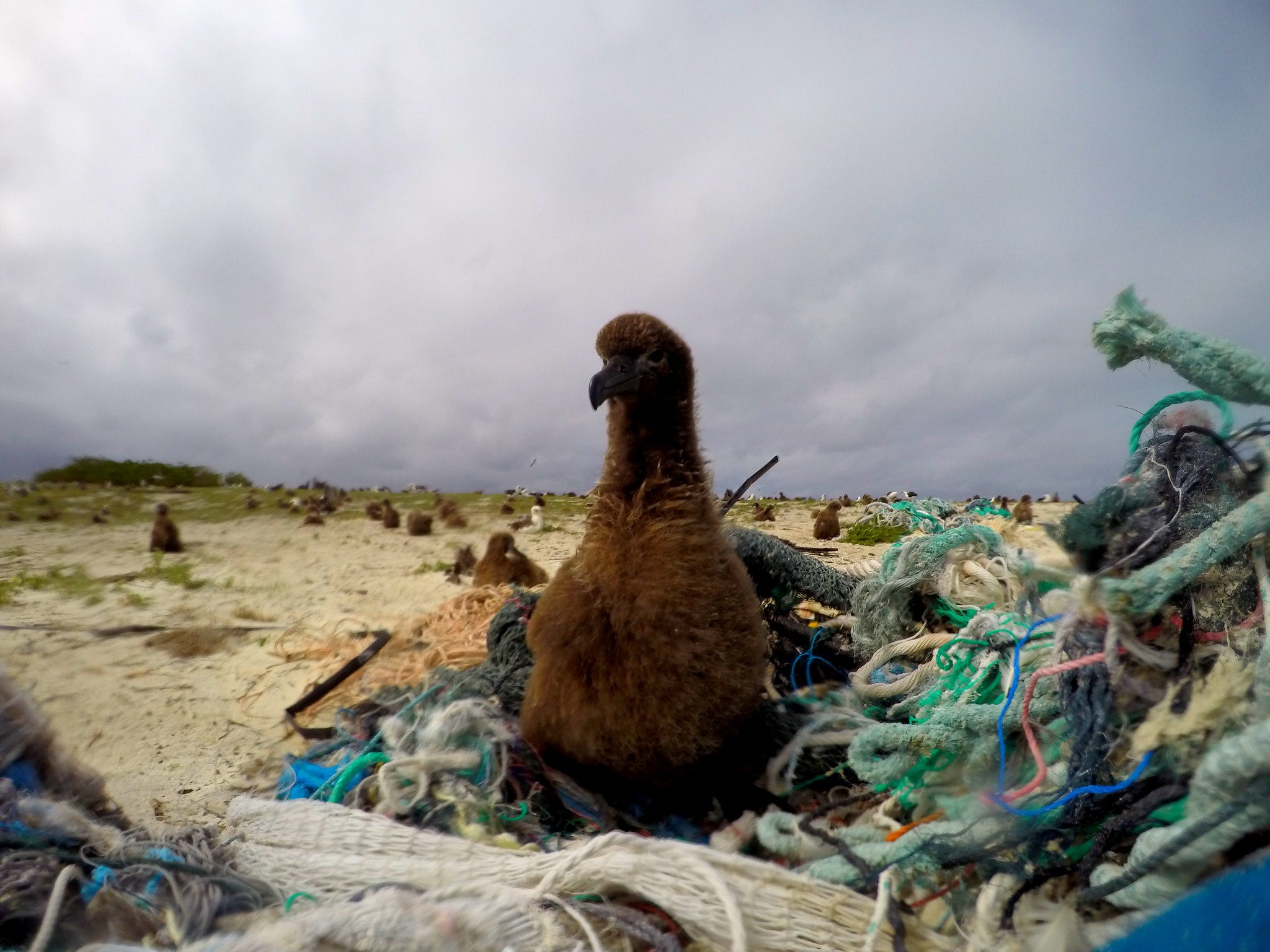
8. Once plastic ends up in the gyres, it’s almost impossible to remove.
Multiple factors make it challenging to eliminate plastic floating in the ocean gyres. For one thing, the middle of the gyres are thousands of miles away from the mainland. Also, most of the debris in the gyres is not on the surface (see fact #4). And lastly, much of the debris is not large, easy-to-clean pieces of plastic. Instead, there are millions of tiny microplastic particles too small to be caught in nets.
An innovative project called The Ocean Cleanup is trying to clean up the larger parts of the floating plastic debris. But the most-advocated solution to decreasing the number of plastics in the ocean is to stop using and producing plastics in the first place.
Hopefully this blog taught you something new about ocean gyres and ways to spread awareness about restoring the ocean ecosystem.
Image credits: Ocean gyres (Ocean Gyres of the World by Rebecca Senft, published by SITNBoston and licensed under CC BY-NC-SA 4.0); Underwater plastic pollution (Naja Bertolt Jensen on Unsplash); River pollution chart (Statista. “The Rivers Filling The Oceans With Plastic.” January 5, 2021); Albatross chick (Albatross Chick by Papahānaumokuākea Marine National Monument is licensed under CC BY-NC 2.0)



